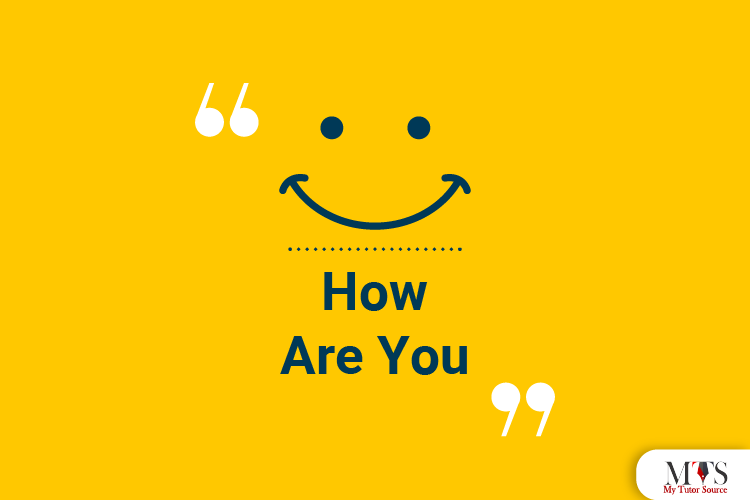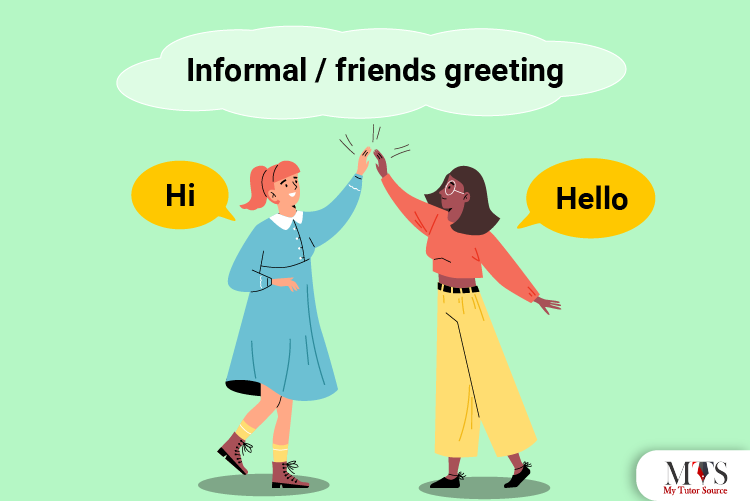

An introduction in English is one of the basic steps towards learning English, yet we sometimes fail to do it correctly. We are usually unaware of the situation, whether we need to give a formal introduction here or an informal one. In any situation, you need to be prepared with a good introduction beforehand so that you won’t have to come up with a way right at that time, making a wrong impression with your introduction.
Let’s discuss how these different forms of introduction work and what can be done to master them well. You can practice your skills with our private tutors as well.
Basically, an introduction is how you present something to someone for the first time. It can be about you, a product, some other person, or any other thing that you are bringing up in front of the other person or audience for the very first time.
Usually, it is said that the first impression matters a lot, so you have to make sure that it is best from your side. For this, you need to master your introduction skills.
Before you give an introduction, the other person can assume anything about you just by looking at you or anything you are introducing.
Here we have talked about the different ways an introduction works.

How you introduce yourself usually depends on who you are introducing yourself to. There is a concept of being strangers or someone you know a bit or more commonly known as an acquaintance.
An acquaintance is basically someone who you know but not so much to be a close friend. For instance, if you have met someone a few times, someone you study or work with but don’t interact much beyond greetings, or someone you buy coffee from often.
When you come across an acquaintance, it’s considered rather ethical that you at least conduct the common greetings, including a “hello” or “how are you” If you are passing by without any greeting, it is not considered polite.
When you interact with acquaintances on a regular basis, it is essential that you know how to introduce yourself in a polite yet professional manner where you neither overdo your introduction nor underdo it.
On the other hand, there are people who you don’t know, haven’t met, or interacted with. More commonly known as strangers. Being a stranger doesn’t mean you don’t introduce yourself to them when required or do not respond to them when asked about how you are doing.
There should be a perfect way to respond to the questions when asked by a stranger.
In an informal setting, the two people interacting are not communicating through a formal channel. The information being interchanged in this setting is unofficial through informal routes. You can have informal communication at home, with your friends, teacher, or even with your colleagues or boss if the information being exchanged does not involve anything official.

Here are some of the responses to how are you? and their impact on your conversation with someone in an informal setting.
This is a response that gives half the information on your behalf. When someone asks about how you are doing, and you respond with “okay,” they will interpret that answer on their own, which will lead them to think that maybe you are going through something or something is probably not right. If your tone is energetic, then there will be fewer chances of misinterpretation. If you are responding in a very low tone, there will be miscommunication.
Let’s discuss through an example how this response impacts the conversation.
Person 1: Hey mate, how are you and everyone at home?
Person 2: Everyone’s okay. Do visit on the weekend.
Here the word okay in the sentence gives a very neutral message. The listener will have to interpret what you actually mean. Since it’s an informal setting, there could be a follow-up question after this like “are you sure? Is everything actually alright?”.
When someone in an informal conversation asks us, “How are you” we simply tell them that we are hanging in there. This is not preferred in a formal setting. This response indicates that you might be on the verge of giving up, but you are not giving it up; instead, you are just somehow going with the flow.
Let’s discuss with an example how this response can impact your conversation.
Person 1: What’s up? We should sit and talk sometime!
Person 2: Just hanging in there. Yeah, we should!
Here we can get the idea from the response of person 2 that they are not doing so well yet not giving up. We can respond this way in an informal setting when we are not conducting any formal or official conversation because, in that setting, this response can seem a bit inappropriate.
This is another response you can give in an informal setting if you wish to tell the other person that along with the current flow, you are flowing alright. When you want to keep an informal response neutral, this can be a good choice. It doesn’t demonstrate your state of mind completely and also doesn’t let the listener assume about the interpretation of your response.
Let’s discuss how this response might sound in a casual and informal conversation.
Person 1: Hey, How’s it going? How are you catching up with the new semester?
Person 2: So far, so good! I think I’ll get the hold pretty soon this time.
Here the person seems optimistic with their response, and person 1 does not have to ask a follow-up question to ensure what the response means.
While you are in an informal setting and someone asks you how you are doing, you can be briefly honest if you are not doing too well. This will let the other person know that it’s just a phase that you are going through and hoping for it to be over soon. If need be, the other person will continue the conversation by asking the reason for it.
Let’s discuss through an example the impact of this sentence on the conversation.
Person 1: Hey, you okay? You seem a bit quiet these days!
Person 2: Yeah, just going through a rough patch!
Person 1: Hope it gets better. Do you want to talk about it?
In this way, the person has very conveniently conveyed that he is not okay for the time being, and person 1 has asked for the reason if they wish to talk about it.
In a formal setting, there is an exchange of official or very to-the-point information between the two parties. When present in a formal setting, your response should state that you are being formal. A formal conversation usually happens in the way of a meeting between two colleagues, boss and employee, teacher and student, etc. Let’s discuss how introductory conservation goes on in a formal setting.

This is our usual response when someone asks us, “How are you.” Though being a very common response in any setting, this response can project that you are not completely content and alright. The other person will automatically assume that something might be wrong. If you wish to respond with “I am fine” and not sound unhappy, then your tone should be right and cheerful so that the other person doesn’t misinterpret.
Let’s discuss with an example how this response can feel to the listener.
Person 1: Hey! Been so long since we have met. How are you doing?
Person 2: Hey! Yeah, it has been. I am fine. How about you?
Here the communication was going at a good pace, but when person 2 said, “I am fine,” the other person would assume that person 2 was not okay because of a bland tone with this response.
This response definitely sounds a bit better and more positive than “Fine” because here, you are not only giving a positive response to the question, you are also thanking the other person for asking you this question. Usually, when people ask about how you are doing, they simply want a formal response to this question, not an actual extensive one.
So this response is almost close to being a perfect one.
Let’s discuss with an example how this response would affect the tone of the conversation.
Person 1: you weren’t feeling good yesterday? How are you now? Any better?
Person 2: It got better. Now I am very well. Thanks for asking!
In this way, the major details have been covered in this brief yet formal response to the question. Adding a greeting like Thanks at the end of your response can turn your response into a very warm yet formal response, so it’s a very good answer to the question.
This is another good way to respond to the “how are you” question in a formal setting. The good thing about this response is that you are not responding to the question; rather, you are continuing the formal introductory conversation by asking the other person as a counter-question in the response. This is a subtle way to respond to this in a formal setting.
Let’s discuss through an example what this response looks like in a formal conversation.
Person 1: hey! It’s a bright sunny day indeed. How are you doing today?
Person 2: Yeah, definitely! I am Alright, and you?
Person 1: I am fine too!
This is a very brief yet good way of answering the question of how you are doing when asked in a formal setting where people don’t actually want a completely honest and comprehensive answer with stated reasons. They just asked for formal reasons, so this response can prove to be a good one. Your tone needs to be cheerful if you chase to state this response because a wrong tone can make you sound like you are not actually well.
Let’s discuss through an example how this response impacts the conversation.
Person 1: Hey, how are you today?
Person 2: Hey! I am quite well, thanks for asking!
In this way of responding to the question, you need to keep your tone neutral and a bit cheerful to not make it sound like you actually mean what you are saying.
Are you worried about being prepared for a perfect response to the introductory questions like “How are you” in different settings? We have a solution for you. We believe in the saying that “Practice makes it perfect.” With the right knowledge and practice, you will be able to perfectly answer these questions whenever you meet someone.
Let’s discuss some of the ways through which you can practice and master the perfect response to introductory questions.

There are many platforms through which you can observe and learn about different responses you can give. There are online lessons being provided to teach you about the perfect self introductory responses. You can observe from moves, books, and documentaries as to how the responses vary, giving you options to choose from.
Practicing with yourself is known to be a very productive way of boosting self-confidence. When you have found some good choices as a response to these questions, you can stand in front of the mirror to practice. Looking at yourself while saying it out loud will enable you to know which areas of it need corrections and how you can make it better.
Another way to analyze your response and find the areas to be corrected is to record yourself when you are practicing, so you don’t have to analyze it right at that moment. You can simply play the recording afterward and analyze it closely so that you can practice again if needed until you have mastered it perfectly.
There are many courses available through which you can master your skills of spoken English. They also help you work on your literacy skills that are associated with a self-introduction and a boost in confidence. Our tutors are also well qualified to provide you with any such session to help you improve these skills.
People tend to make a judgment about how you introduce yourself, so you need to pay close attention to it. Sometimes you are giving an introductory response to someone for the very first time, and that will be considered as your first impression on them; hence it should be good enough. That impression of you will stay with them, and based on that impression, they will perceive you as a person.
If you are being informal in a formal setting and vice versa, the conversation will not be up to the mark as it should be.
The introduction you give to someone should be good since it determines your impression on them. There should be a good choice of words, tone, and body language, all connecting well with each other to form a perfect response.
As we have discussed above, there are several responses that are well suited for a formal setting where official information is being exchanged or whereas some are well suited for an informal setting where the flow of conversation is rather easygoing and informal.